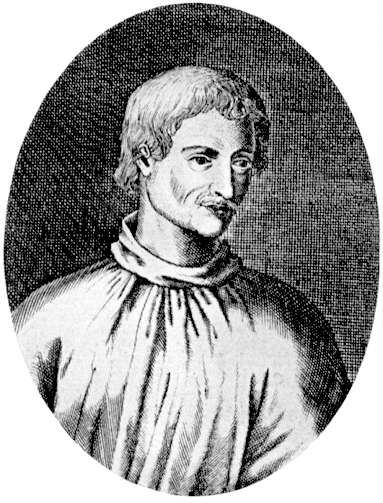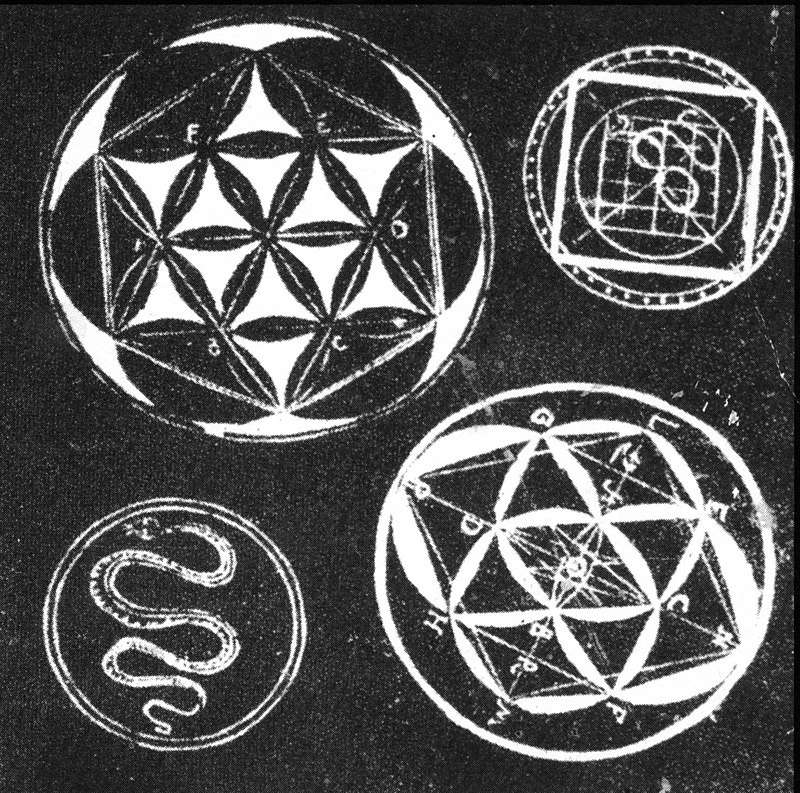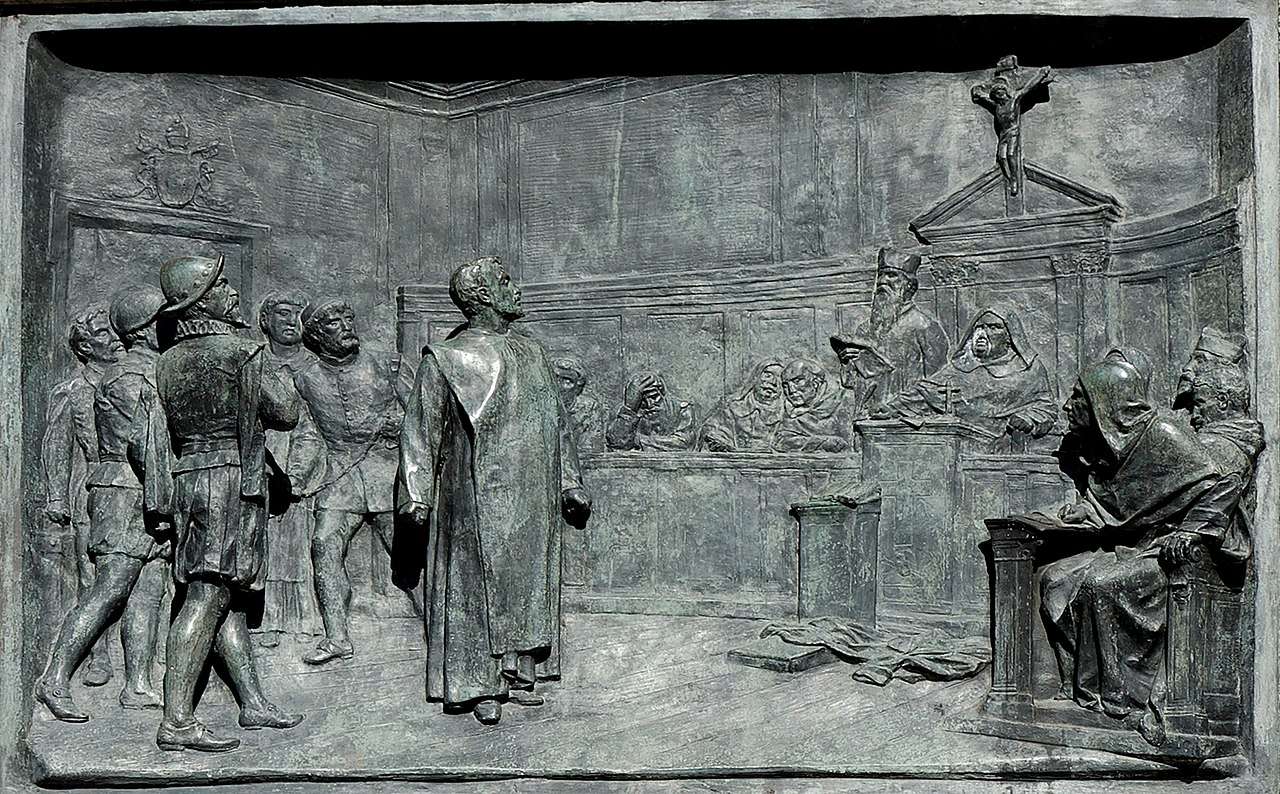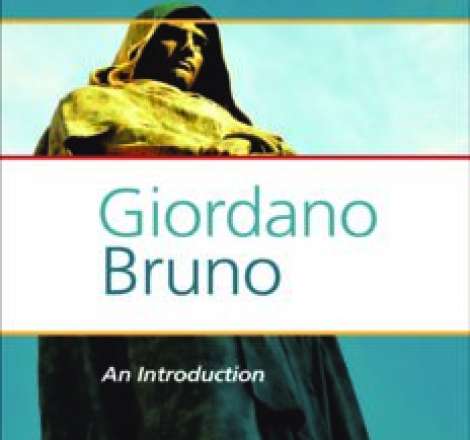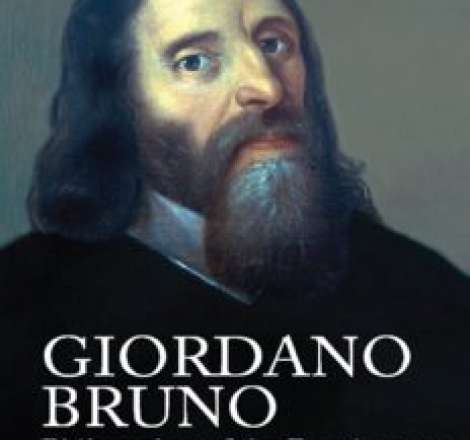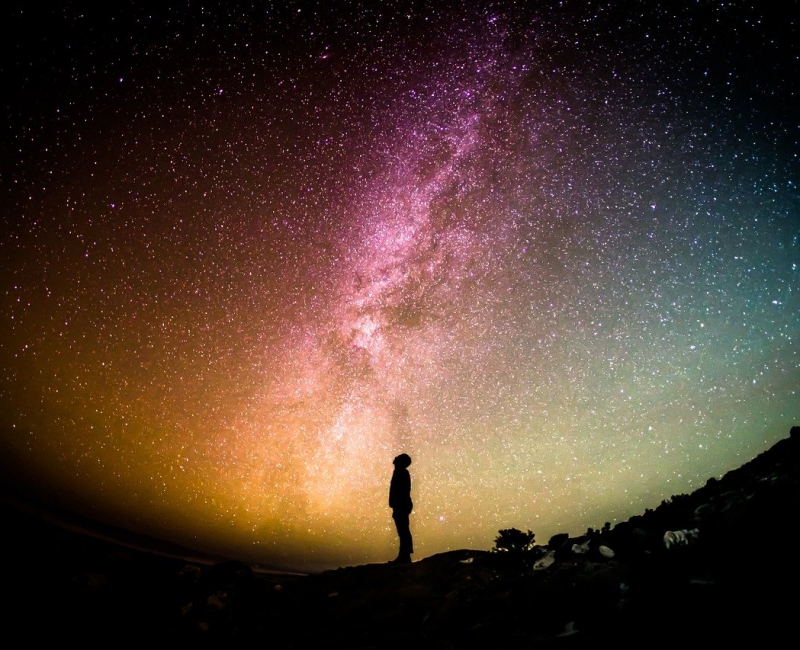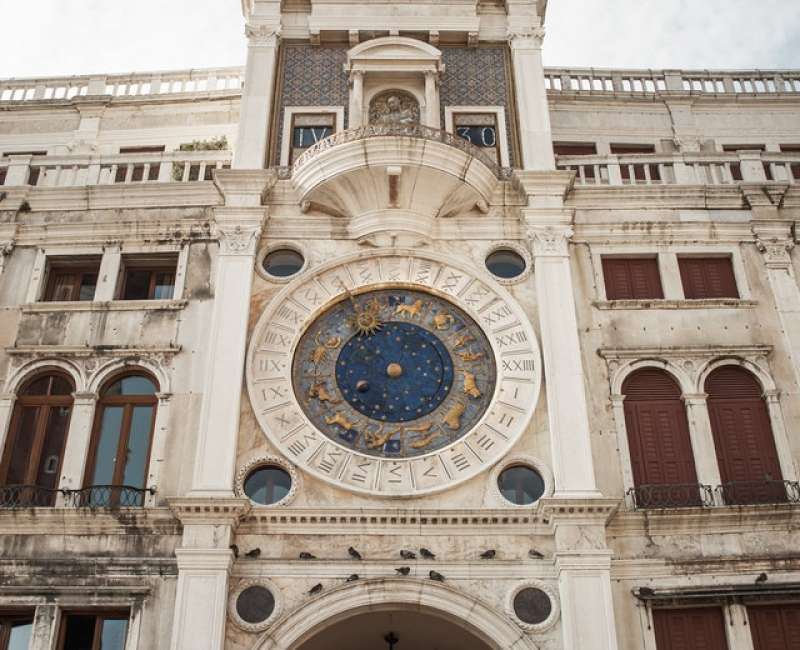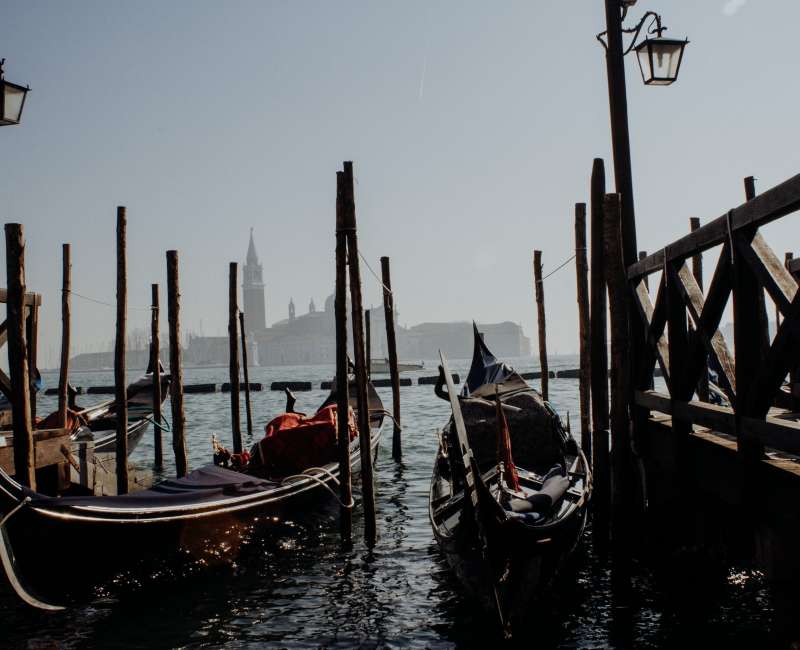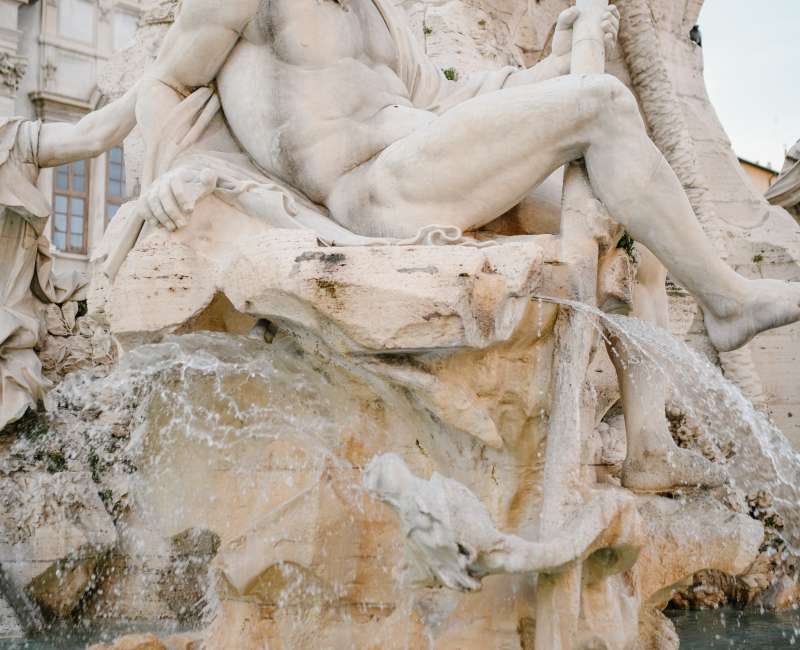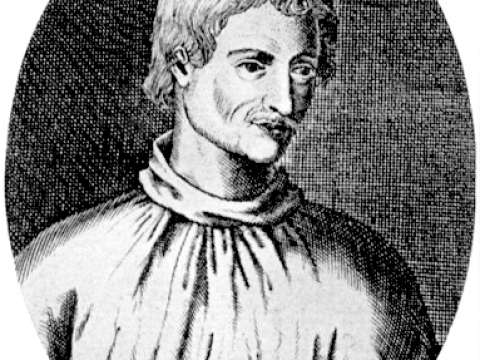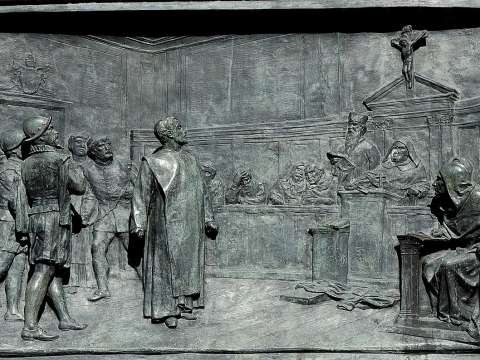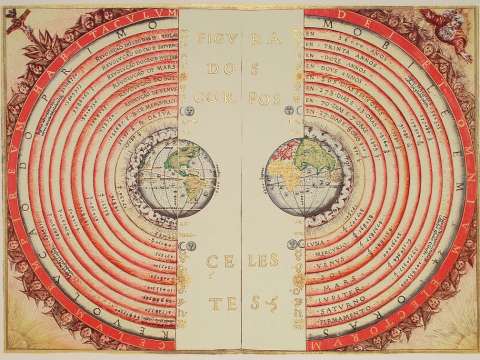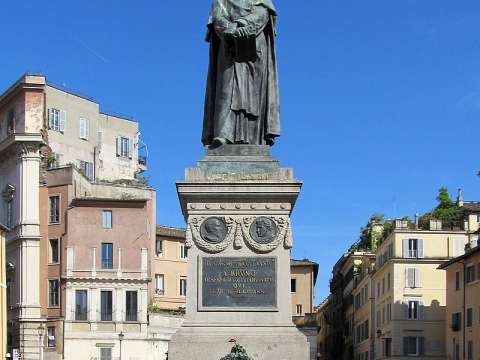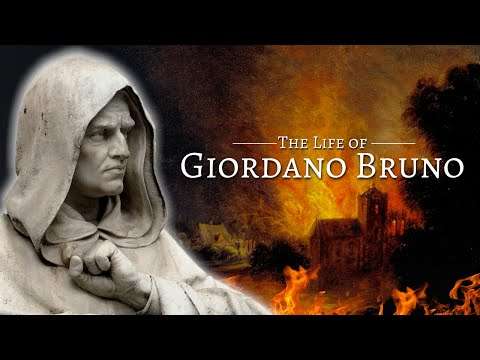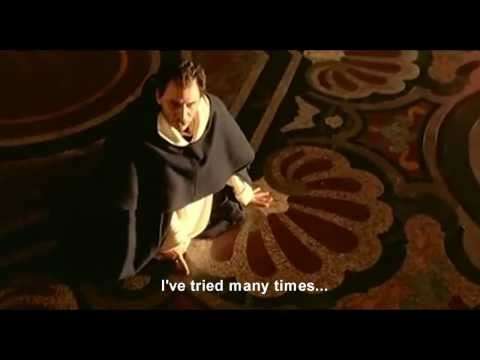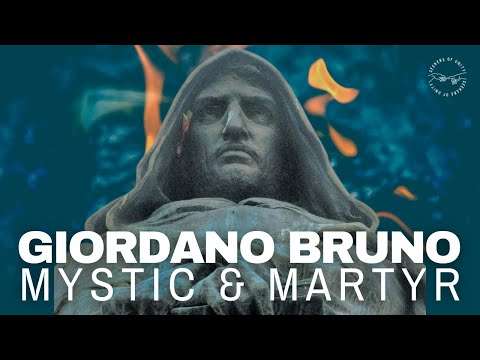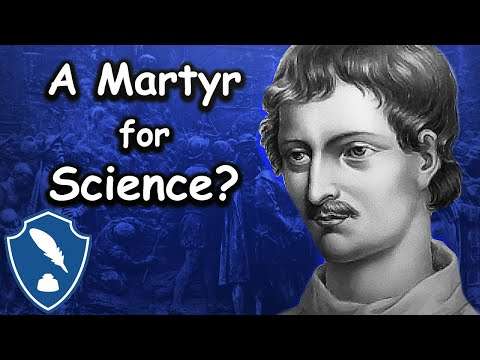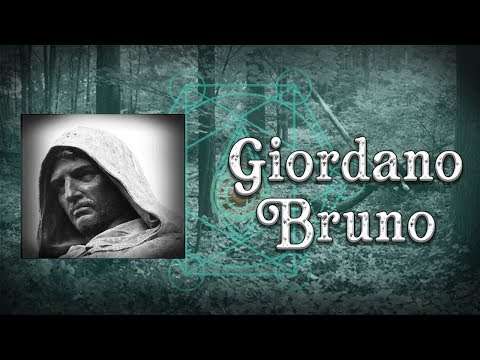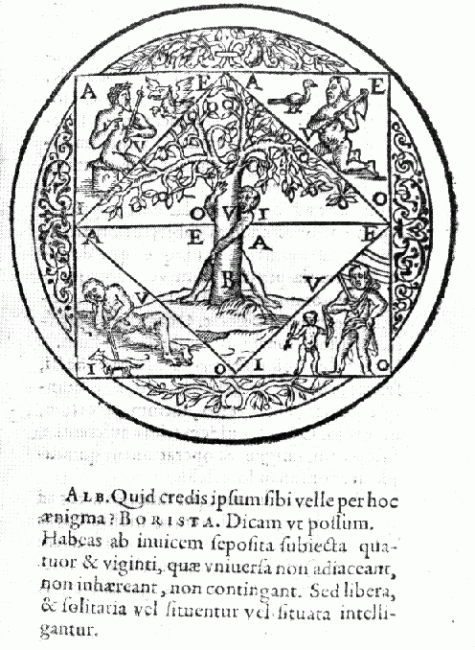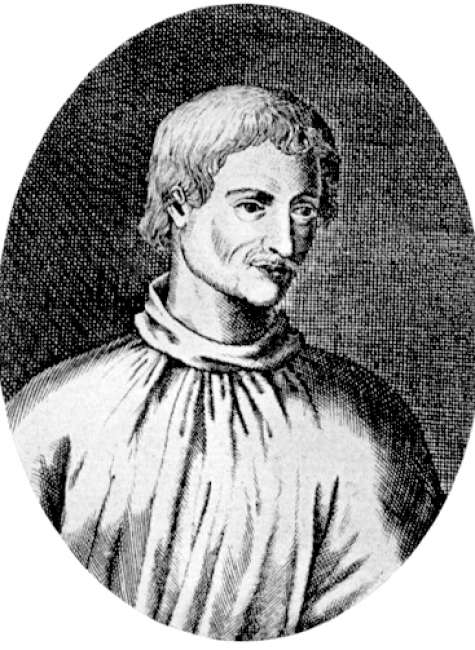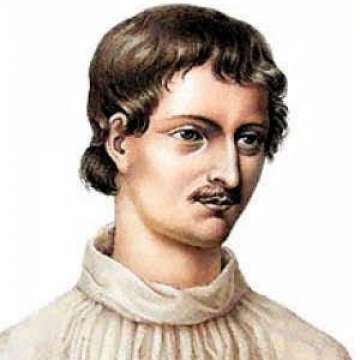

Giordano Bruno (1548-1600)
Truth does not change because it is, or is not, believed by a majority of the people.
Giordano Bruno was an Italian Dominican friar, philosopher, mathematician, poet, cosmological theorist, and Hermetic occultist. He is known for his cosmological theories, which conceptually extended the then-novel Copernican model. He proposed that the stars were distant suns surrounded by their own planets, and he raised the possibility that these planets might foster life of their own, a philosophical position known as cosmic pluralism. He also insisted that the universe is infinite and could have no "center".
Starting in 1593, Bruno was tried for heresy by the Roman Inquisition on charges of denial of several core Catholic doctrines, including eternal damnation, the Trinity, the divinity of Christ, the virginity of Mary, and transubstantiation. Bruno's pantheism was not taken lightly by the church, nor was his teaching of the transmigration of the soul and reincarnation. The Inquisition found him guilty, and he was burned at the stake in Rome's Campo de' Fiori in 1600. After his death, he gained considerable fame, being particularly celebrated by 19th- and early 20th-century commentators who regarded him as a martyr for science, although historians agree that his heresy trial was not a response to his astronomical views but rather a response to his philosophical and religious views. Bruno's case is still considered a landmark in the history of free thought and the emerging sciences.
In addition to cosmology, Bruno also wrote extensively on the art of memory, a loosely organized group of mnemonic techniques and principles. Historian Frances Yates argues that Bruno was deeply influenced by Islamic astrology particularly the philosophy of Averroes, Neoplatonism, Renaissance Hermeticism, and Genesis-like legends surrounding the Egyptian god Thoth. Other studies of Bruno have focused on his qualitative approach to mathematics and his application of the spatial concepts of geometry to language.
Life
Early years, 1548–1576
Born Filippo Bruno in Nola a comune in the modern-day province of Naples, in the Southern Italian region of Campania, then part of the Kingdom of Naples in 1548, he was the son of Giovanni Bruno, a soldier, and Fraulissa Savolino. In his youth he was sent to Naples to be educated. He was tutored privately at the Augustinian monastery there, and attended public lectures at the Studium Generale. At the age of 17, he entered the Dominican Order at the monastery of San Domenico Maggiore in Naples, taking the name Giordano, after Giordano Crispo, his metaphysics tutor. He continued his studies there, completing his novitiate, and became an ordained priest in 1572 at age 24. During his time in Naples he became known for his skill with the art of memory and on one occasion traveled to Rome to demonstrate his mnemonic system before Pope Pius V and Cardinal Rebiba. In his later years Bruno claimed that the Pope accepted his dedication to him of the lost work On The Ark of Noah at this time.
While Bruno was distinguished for outstanding ability, his taste for free thinking and forbidden books soon caused him difficulties. Given the controversy he caused in later life it is surprising that he was able to remain within the monastic system for eleven years. In his testimony to Venetian inquisitors during his trial, many years later, he says that proceedings were twice taken against him for having cast away images of the saints, retaining only a crucifix, and for having recommended controversial texts to a novice. Such behavior could perhaps be overlooked, but Bruno's situation became much more serious when he was reported to have defended the Arian heresy, and when a copy of the banned writings of Erasmus, annotated by him, was discovered hidden in the convent privy. When he learned that an indictment was being prepared against him in Naples he fled, shedding his religious habit, at least for a time.
First years of wandering, 1576–1583
Bruno first went to the Genoese port of Noli, then to Savona, Turin and finally to Venice, where he published his lost work On the Signs of the Times with the permission so he claimed at his trial of the Dominican Remigio Nannini Fiorentino. From Venice he went to Padua, where he met fellow Dominicans who convinced him to wear his religious habit again. From Padua he went to Bergamo and then across the Alps to Chambéry and Lyon. His movements after this time are obscure.
In 1579 he arrived in Geneva. As D.W. Singer, a Bruno biographer, notes, "The question has sometimes been raised as to whether Bruno became a Protestant, but it is intrinsically most unlikely that he accepted membership in Calvin's communion" During his Venetian trial he told inquisitors that while in Geneva he told the Marchese de Vico of Naples, who was notable for helping Italian refugees in Geneva, "I did not intend to adopt the religion of the city. I desired to stay there only that I might live at liberty and in security."

He went to France, arriving first in Lyon, and thereafter settling for a time 1580–1581 in Toulouse, where he took his doctorate in theology and was elected by students to lecture in philosophy. It seems he also attempted at this time to return to Catholicism, but was denied absolution by the Jesuit priest he approached. His talents attracted the benevolent attention of the king Henry III. The king summoned him to the court. Bruno subsequently reported
I got me such a name that King Henry III summoned me one day to discover from me if the memory which I possessed was natural or acquired by magic art. I satisfied him that it did not come from sorcery but from organized knowledge; and, following this, I got a book on memory printed, entitled The Shadows of Ideas, which I dedicated to His Majesty. Forthwith he gave me an Extraordinary Lectureship with a salary.
In Paris, Bruno enjoyed the protection of his powerful French patrons. During this period, he published several works on mnemonics, including De umbris idearum On the Shadows of Ideas, 1582, Ars Memoriae The Art of Memory, 1582, and Cantus Circaeus Circe's Song, 1582. All of these were based on his mnemonic models of organized knowledge and experience, as opposed to the simplistic logic-based mnemonic techniques of Petrus Ramus then becoming popular.
England, 1583–1585
In April 1583, Bruno went to England with letters of recommendation from Henry III as a guest of the French ambassador, Michel de Castelnau. There he became acquainted with the poet Philip Sidney to whom he dedicated two books and other members of the Hermetic circle around John Dee, though there is no evidence that Bruno ever met Dee himself. He also lectured at Oxford, and unsuccessfully sought a teaching position there. His views were controversial, notably with John Underhill, Rector of Lincoln College and subsequently bishop of Oxford, and George Abbot, who later became Archbishop of Canterbury. Abbot mocked Bruno for supporting "the opinion of Copernicus that the earth did go round, and the heavens did stand still; whereas in truth it was his own head which rather did run round, and his brains did not stand still", and found Bruno had both plagiarized and misrepresented Ficino's work, leading Bruno to return to the continent.

Nevertheless, his stay in England was fruitful. During that time Bruno completed and published some of his most important works, the six "Italian Dialogues", including the cosmological tracts La cena de le ceneri The Ash Wednesday Supper, 1584, De la causa, principio et uno On Cause, Principle and Unity, 1584, De l'infinito, universo et mondi On the Infinite, Universe and Worlds, 1584 as well as Lo spaccio de la bestia trionfante The Expulsion of the Triumphant Beast, 1584 and De gli eroici furori On the Heroic Frenzies, 1585. Some of these were printed by John Charlewood. Some of the works that Bruno published in London, notably The Ash Wednesday Supper, appear to have given offense. Once again, Bruno's controversial views and tactless language lost him the support of his friends. John Bossy has advanced the theory that, while staying in the French Embassy in London, Bruno was also spying on Catholic conspirators, under the pseudonym "Henry Fagot", for Sir Francis Walsingham, Queen Elizabeth's Secretary of State.
Bruno is sometimes cited as being the first to propose that the universe is infinite, which he did during his time in England, but an English scientist, Thomas Digges, put forth this idea in a published work in 1576, some eight years earlier than Bruno. An infinite universe and the possibility of alien life had also been earlier suggested by German Catholic Cardinal Nicholas of Cusa in "On Learned Ignorance" published in 1440.
Last years of wandering, 1585–1592
In October 1585, after the French embassy in London was attacked by a mob, Bruno returned to Paris with Castelnau, finding a tense political situation. Moreover, his 120 theses against Aristotelian natural science and his pamphlets against the mathematician Fabrizio Mordente soon put him in ill favor. In 1586, following a violent quarrel about Mordente's invention, the differential compass, he left France for Germany.
In Germany he failed to obtain a teaching position at Marburg, but was granted permission to teach at Wittenberg, where he lectured on Aristotle for two years. However, with a change of intellectual climate there, he was no longer welcome, and went in 1588 to Prague, where he obtained 300 taler from Rudolf II, but no teaching position. He went on to serve briefly as a professor in Helmstedt, but had to flee again when he was excommunicated by the Lutherans.
During this period he produced several Latin works, dictated to his friend and secretary Girolamo Besler, including De Magia On Magic, Theses De Magia Theses on Magic and De Vinculis in Genere A General Account of Bonding. All these were apparently transcribed or recorded by Besler or Bisler between 1589 and 1590. He also published De Imaginum, Signorum, Et Idearum Compositione On the Composition of Images, Signs and Ideas, 1591.

In 1591 he was in Frankfurt. Apparently, during the Frankfurt Book Fair, he received an invitation to Venice from the local patrician Giovanni Mocenigo, who wished to be instructed in the art of memory, and also heard of a vacant chair in mathematics at the University of Padua. At the time the Inquisition seemed to be losing some of its strictness, and because the Republic of Venice was the most liberal state in the Italian Peninsula, Bruno was lulled into making the fatal mistake of returning to Italy.
He went first to Padua, where he taught briefly, and applied unsuccessfully for the chair of mathematics, which was given instead to Galileo Galilei one year later. Bruno accepted Mocenigo's invitation and moved to Venice in March 1592. For about two months he served as an in-house tutor to Mocenigo. When Bruno announced his plan to leave Venice to his host, the latter, who was unhappy with the teachings he had received and had apparently come to dislike Bruno, denounced him to the Venetian Inquisition, which had Bruno arrested on 22 May 1592. Among the numerous charges of blasphemy and heresy brought against him in Venice, based on Mocenigo's denunciation, was his belief in the plurality of worlds, as well as accusations of personal misconduct. Bruno defended himself skillfully, stressing the philosophical character of some of his positions, denying others and admitting that he had had doubts on some matters of dogma. The Roman Inquisition, however, asked for his transfer to Rome. After several months of argument, the Venetian authorities reluctantly consented and Bruno was sent to Rome in February 1593.
Imprisonment, trial and execution, 1593–1600
During the seven years of his trial in Rome, Bruno was held in confinement, lastly in the Tower of Nona. Some important documents about the trial are lost, but others have been preserved, among them a summary of the proceedings that was rediscovered in 1940. The numerous charges against Bruno, based on some of his books as well as on witness accounts, included blasphemy, immoral conduct, and heresy in matters of dogmatic theology, and involved some of the basic doctrines of his philosophy and cosmology. Luigi Firpo speculates the charges made against Bruno by the Roman Inquisition were:
- holding opinions contrary to the Catholic faith and speaking against it and its ministers;
- holding opinions contrary to the Catholic faith about the Trinity, divinity of Christ, and Incarnation;
- holding opinions contrary to the Catholic faith pertaining to Jesus as Christ;
- holding opinions contrary to the Catholic faith regarding the virginity of Mary, mother of Jesus;
- holding opinions contrary to the Catholic faith about both Transubstantiation and Mass;
- claiming the existence of a plurality of worlds and their eternity;
- believing in metempsychosis and in the transmigration of the human soul into brutes;
- dealing in magics and divination.
Bruno defended himself as he had in Venice, insisting that he accepted the Church's dogmatic teachings, but trying to preserve the basis of his philosophy. In particular, he held firm to his belief in the plurality of worlds, although he was admonished to abandon it. His trial was overseen by the Inquisitor Cardinal Bellarmine, who demanded a full recantation, which Bruno eventually refused. On 20 January 1600, Pope Clement VIII declared Bruno a heretic, and the Inquisition issued a sentence of death. According to the correspondence of Gaspar Schopp of Breslau, he is said to have made a threatening gesture towards his judges and to have replied: Maiori forsan cum timore sententiam in me fertis quam ego accipiam "Perhaps you pronounce this sentence against me with greater fear than I receive it".

He was turned over to the secular authorities. On Ash Wednesday, 17 February 1600, in the Campo de' Fiori a central Roman market square, with his "tongue imprisoned because of his wicked words", he was hung upside down naked before finally being burned at the stake. His ashes were thrown into the Tiber river. All of Bruno's works were placed on the Index Librorum Prohibitorum in 1603. The inquisition cardinals who judged Giordano Bruno were Cardinal Bellarmino Bellarmine, Cardinal Madruzzo Madruzzi, Camillo Cardinal Borghese later Pope Paul V, Domenico Cardinal Pinelli, Pompeio Cardinal Arrigoni, Cardinal Sfondrati, Pedro Cardinal De Deza Manuel and Cardinal Santorio Archbishop of Santa Severina, Cardinal-Bishop of Palestrina.
The measures taken to prevent Bruno continuing to speak have resulted in his becoming a symbol for free thought and speech in present-day Rome, where an annual memorial service takes place close to the spot where he was executed.
Physical appearance
The earliest likeness of Bruno is an engraving published in 1715 and cited by Salvestrini as "the only known portrait of Bruno". Salvestrini suggests that it is a re-engraving made from a now lost original. This engraving has provided the source for later images.
The records of Bruno's imprisonment by the Venetian inquisition in May 1592 describe him as a man "of average height, with a hazel-coloured beard and the appearance of being about forty years of age". Alternately, a passage in a work by George Abbot indicates that Bruno was of diminutive stature: "When that Italian Didapper, who intituled himselfe Philotheus Iordanus Brunus Nolanus, magis elaboratae Theologiae Doctor, &c. with a name longer than his body...". The word "didapper" used by Abbot is the derisive term which at the time meant "a small diving waterfowl".
Cosmology
Contemporary cosmological beliefs
In the first half of the 15th century, Nicholas of Cusa challenged the then widely accepted philosophies of Aristotelianism, envisioning instead an infinite universe whose center was everywhere and circumference nowhere, and moreover teeming with countless stars. He also predicted that neither were the rotational orbits circular nor were their movements uniform.
In the second half of the 16th century, the theories of Copernicus 1473–1543 began diffusing through Europe. Copernicus conserved the idea of planets fixed to solid spheres, but considered the apparent motion of the stars to be an illusion caused by the rotation of the Earth on its axis; he also preserved the notion of an immobile center, but it was the Sun rather than the Earth. Copernicus also argued the Earth was a planet orbiting the Sun once every year. However he maintained the Ptolemaic hypothesis that the orbits of the planets were composed of perfect circles—deferents and epicycles—and that the stars were fixed on a stationary outer sphere.

Despite the widespread publication of Copernicus' work De revolutionibus orbium coelestium, during Bruno's time most educated Catholics subscribed to the Aristotelian geocentric view that the Earth was the center of the universe, and that all heavenly bodies revolved around it. The ultimate limit of the universe was the primum mobile, whose diurnal rotation was conferred upon it by a transcendental God, not part of the universe although, as the kingdom of heaven, adjacent to it, a motionless prime mover and first cause. The fixed stars were part of this celestial sphere, all at the same fixed distance from the immobile Earth at the center of the sphere. Ptolemy had numbered these at 1,022, grouped into 48 constellations. The planets were each fixed to a transparent sphere.
Few astronomers of Bruno's time accepted Copernicus's heliocentric model. Among those who did were the Germans Michael Maestlin 1550–1631, Christoph Rothmann, Johannes Kepler 1571–1630; the Englishman Thomas Digges, author of A Perfit Description of the Caelestial Orbes; and the Italian Galileo Galilei 1564–1642.
Bruno's cosmological claims
In 1584, Bruno published two important philosophical dialogues La Cena de le Ceneri and De l'infinito universo et mondi in which he argued against the planetary spheres Christoph Rothmann did the same in 1586 as did Tycho Brahe in 1587 and affirmed the Copernican principle.
In particular, to support the Copernican view and oppose the objection according to which the motion of the Earth would be perceived by means of the motion of winds, clouds etc., in La Cena de le Ceneri Bruno anticipates some of the arguments of Galilei on the relativity principle. Note that he also uses the example now known as Galileo's ship.
Theophilus – [...] air through which the clouds and winds move are parts of the Earth, [...] to mean under the name of Earth the whole machinery and the entire animated part, which consists of dissimilar parts; so that the rivers, the rocks, the seas, the whole vaporous and turbulent air, which is enclosed within the highest mountains, should belong to the Earth as its members, just as the air [does] in the lungs and in other cavities of animals by which they breathe, widen their arteries, and other similar effects necessary for life are performed. The clouds, too, move through accidents in the body of the Earth and are in its bowels as are the waters. [...] With the Earth move [...] all things that are on the Earth. If, therefore, from a point outside the Earth something were thrown upon the Earth, it would lose, because of the latter's motion, its straightness as would be seen on the ship [...] moving along a river, if someone on point C of the riverbank were to throw a stone along a straight line, and would see the stone miss its target by the amount of the velocity of the ship's motion. But if someone were placed high on the mast of that ship, move as it may however fast, he would not miss his target at all, so that the stone or some other heavy thing thrown downward would not come along a straight line from the point E which is at the top of the mast, or cage, to the point D which is at the bottom of the mast, or at some point in the bowels and body of the ship. Thus, if from the point D to the point E someone who is inside the ship would throw a stone straight up, it would return to the bottom along the same line however far the ship moved, provided it was not subject to any pitch and roll.
Bruno's infinite universe was filled with a substance—a "pure air", aether, or spiritus—that offered no resistance to the heavenly bodies which, in Bruno's view, rather than being fixed, moved under their own impetus momentum. Most dramatically, he completely abandoned the idea of a hierarchical universe.
The universe is then one, infinite, immobile.... It is not capable of comprehension and therefore is endless and limitless, and to that extent infinite and indeterminable, and consequently immobile.
Bruno's cosmology distinguishes between "suns" which produce their own light and heat, and have other bodies moving around them; and "earths" which move around suns and receive light and heat from them. Bruno suggested that some, if not all, of the objects classically known as fixed stars are in fact suns. According to astrophysicist Steven Soter, he was the first person to grasp that "stars are other suns with their own planets."
Bruno wrote that other worlds "have no less virtue nor a nature different from that of our Earth" and, like Earth, "contain animals and inhabitants".
During the late 16th century, and throughout the 17th century, Bruno's ideas were held up for ridicule, debate, or inspiration. Margaret Cavendish, for example, wrote an entire series of poems against "atoms" and "infinite worlds" in Poems and Fancies in 1664. Bruno's true, if partial, vindication would have to wait for the implications and impact of Newtonian cosmology. Bruno's overall contribution to the birth of modern science is still controversial. Some scholars follow Frances Yates in stressing the importance of Bruno's ideas about the universe being infinite and lacking geocentric structure as a crucial crossing point between the old and the new. Others see in Bruno's idea of multiple worlds instantiating the infinite possibilities of a pristine, indivisible One, a forerunner of Everett's many-worlds interpretation of quantum mechanics.
While many academics note Bruno's theological position as pantheism, several have described it as pandeism, and some also as panentheism. Physicist and philosopher Max Bernhard Weinstein in his Welt- und Lebensanschauungen, Hervorgegangen aus Religion, Philosophie und Naturerkenntnis "World and Life Views, Emerging From Religion, Philosophy and Nature", wrote that the theological model of pandeism was strongly expressed in the teachings of Bruno, especially with respect to the vision of a deity for which "the concept of God is not separated from that of the universe." However, Otto Kern takes exception to what he considers Weinstein's overbroad assertions that Bruno, as well as other historical philosophers such as John Scotus Eriugena, Anselm of Canterbury, Nicholas of Cusa, Mendelssohn, and Lessing, were pandeists or leaned towards pandeism. Discover editor Corey S. Powell also described Bruno's cosmology as pandeistic, writing that it was "a tool for advancing an animist or Pandeist theology", and this assessment of Bruno as a pandeist was agreed with by science writer Michael Newton Keas, and The Daily Beast writer David Sessions.
Retrospective views of Bruno
Late Vatican position
The Vatican has published few official statements about Bruno's trial and execution. In 1942, Cardinal Giovanni Mercati, who discovered a number of lost documents relating to Bruno's trial, stated that the Church was perfectly justified in condemning him. On the 400th anniversary of Bruno's death, in 2000, Cardinal Angelo Sodano declared Bruno's death to be a "sad episode" but, despite his regret, he defended Bruno's prosecutors, maintaining that the Inquisitors "had the desire to serve freedom and promote the common good and did everything possible to save his life". In the same year, Pope John Paul II made a general apology for "the use of violence that some have committed in the service of truth".
A martyr of science
Some authors have characterized Bruno as a "martyr of science", suggesting parallels with the Galileo affair which began around 1610. "It should not be supposed," writes A. M. Paterson of Bruno and his "heliocentric solar system", that he "reached his conclusions via some mystical revelation....His work is an essential part of the scientific and philosophical developments that he initiated." Paterson echoes Hegel in writing that Bruno "ushers in a modern theory of knowledge that understands all natural things in the universe to be known by the human mind through the mind's dialectical structure".
Ingegno writes that Bruno embraced the philosophy of Lucretius, "aimed at liberating man from the fear of death and the gods." Characters in Bruno's Cause, Principle and Unity desire "to improve speculative science and knowledge of natural things," and to achieve a philosophy "which brings about the perfection of the human intellect most easily and eminently, and most closely corresponds to the truth of nature."

Other scholars oppose such views, and claim Bruno's martyrdom to science to be exaggerated, or outright false. For Yates, while "nineteenth century liberals" were thrown "into ecstasies" over Bruno's Copernicanism, "Bruno pushes Copernicus' scientific work back into a prescientific stage, back into Hermeticism, interpreting the Copernican diagram as a hieroglyph of divine mysteries."
According to historian Mordechai Feingold, "Both admirers and critics of Giordano Bruno basically agree that he was pompous and arrogant, highly valuing his opinions and showing little patience with anyone who even mildly disagreed with him." Discussing Bruno's experience of rejection when he visited Oxford University, Feingold suggests that "it might have been Bruno's manner, his language and his self-assertiveness, rather than his ideas" that caused offence.
Theological heresy
In his Lectures on the History of Philosophy Hegel writes that Bruno's life represented "a bold rejection of all Catholic beliefs resting on mere authority."
Alfonso Ingegno states that Bruno's philosophy "challenges the developments of the Reformation, calls into question the truth-value of the whole of Christianity, and claims that Christ perpetrated a deceit on mankind... Bruno suggests that we can now recognize the universal law which controls the perpetual becoming of all things in an infinite universe." A. M. Paterson says that, while we no longer have a copy of the official papal condemnation of Bruno, his heresies included "the doctrine of the infinite universe and the innumerable worlds" and his beliefs "on the movement of the earth".
Michael White notes that the Inquisition may have pursued Bruno early in his life on the basis of his opposition to Aristotle, interest in Arianism, reading of Erasmus, and possession of banned texts. White considers that Bruno's later heresy was "multifaceted" and may have rested on his conception of infinite worlds. "This was perhaps the most dangerous notion of all... If other worlds existed with intelligent beings living there, did they too have their visitations? The idea was quite unthinkable."
Frances Yates rejects what she describes as the "legend that Bruno was prosecuted as a philosophical thinker, was burned for his daring views on innumerable worlds or on the movement of the earth." Yates however writes that "the Church was... perfectly within its rights if it included philosophical points in its condemnation of Bruno's heresies" because "the philosophical points were quite inseparable from the heresies."
According to the Stanford Encyclopedia of Philosophy, "in 1600 there was no official Catholic position on the Copernican system, and it was certainly not a heresy. When was burned at the stake as a heretic, it had nothing to do with his writings in support of Copernican cosmology."
The website of the Vatican Apostolic Archive, discussing a summary of legal proceedings against Bruno in Rome, states:
In the same rooms where Giordano Bruno was questioned, for the same important reasons of the relationship between science and faith, at the dawning of the new astronomy and at the decline of Aristotle's philosophy, sixteen years later, Cardinal Bellarmino, who then contested Bruno's heretical theses, summoned Galileo Galilei, who also faced a famous inquisitorial trial, which, luckily for him, ended with a simple abjuration.
In art and literature
Artistic depictions
Following the 1870 Capture of Rome by the newly created Kingdom of Italy and the end of the Church's temporal power over the city, the erection of a monument to Bruno on the site of his execution became feasible. The monument was sharply opposed by the clerical party, but was finally erected by the Rome Municipality and inaugurated in 1889.
A statue of a stretched human figure standing on its head, designed by Alexander Polzin and depicting Bruno's death at the stake, was placed in Potsdamer Platz station in Berlin on 2 March 2008.
Retrospective iconography of Bruno shows him with a Dominican cowl but not tonsured. Edward Gosselin has suggested that it is likely Bruno kept his tonsure at least until 1579, and it is possible that he wore it again thereafter.
An idealized animated version of Bruno appears in the first episode of the 2014 television series Cosmos: A Spacetime Odyssey. In this depiction, Bruno is shown with a more modern look, without tonsure and wearing clerical robes and without his hood. Cosmos presents Bruno as an impoverished philosopher who was ultimately executed due to his refusal to recant his belief in other worlds, a portrayal that was criticized by some as simplistic or historically inaccurate. Corey S. Powell, of Discover magazine, says of Bruno, "A major reason he moved around so much is that he was argumentative, sarcastic, and drawn to controversy...He was a brilliant, complicated, difficult man.
The 2016 song "Roman Sky" by hard rock band Avenged Sevenfold focuses on the death of Bruno.
Also the song "Anima Mundi" by Massimiliano Larocca and the album Numen Lumen by neofolk group Hautville, which tracks Bruno's lyrics, were dedicated to the philosopher.
References in poetry
Algernon Charles Swinburne wrote a poem honoring Giordano Bruno in 1889, when the statue of Bruno was constructed in Rome.
Czeslaw Milosz evokes the story and image of Giordano Bruno in his poem "Campo Dei Fiori" Warsaw 1943. Randall Jarell's poem "The Emancipators" addresses Bruno, along with Galileo and Newton, as an originator of the modern scientific-industrial world.
Heather McHugh depicted Bruno as the principal of a story told at dinner, by an "underestimated" travel guide to a group of contemporary American poets in Rome. The poem originally published in McHugh's collection of poems Hinge & Sign, nominee for the National Book Award, and subsequently reprinted widely channels the very question of ars poetica, or meta-meaning itself, through the embedded narrative of the suppression of Bruno's words, silenced towards the end of his life both literally and literarily.
Louis L’amour wrote To Giordano Bruno, a poem published in Smoke From This Altar, 1990.
Appearances in fiction
Bruno and his theory of "the coincidence of contraries" coincidentia oppositorum play an important role in James Joyce's novel Finnegans Wake. Joyce wrote in a letter to his patroness, Harriet Shaw Weaver, "His philosophy is a kind of dualism – every power in nature must evolve an opposite in order to realise itself and opposition brings reunion". Amongst his numerous allusions to Bruno in his novel, including his trial and torture, Joyce plays upon Bruno's notion of coincidentia oppositorum through applying his name to word puns such as "Browne and Nolan" the name of Dublin printers and '"brownesberrow in nolandsland".
Giordano Bruno features as the hero in a series of historical crime novels by S.J. Parris a pseudonym of Stephanie Merritt. In order these are Heresy, Prophecy, Sacrilege, Treachery, Conspiracy and Execution.
The Last Confession by Morris West posthumously published is a fictional autobiography of Bruno, ostensibly written shortly before his execution.
In 1973 the biographical drama Giordano Bruno was released, an Italian/French movie directed by Giuliano Montaldo, starring Gian Maria Volonté as Bruno.
Bruno is a central character, and his philosophy a central theme, in John Crowley’s Aegypt 1987, renamed The Solitudes, and the ensuing series of novels: Love & Sleep 1994, Daemonomania 2000, and Endless Things 2007.
Legacy
Giordano Bruno Foundation
The Giordano Bruno Foundation German: Giordano-Bruno-Stiftung is a non-profit foundation based in Germany that pursues the "Support of Evolutionary Humanism". It was founded by entrepreneur Herbert Steffen in 2004. The Giordano Bruno Foundation is critical of religious fundamentalism and nationalism
Giordano Bruno Memorial Award
The SETI League makes an annual award honoring the memory of Giordano Bruno to a deserving person or persons who have made a significant contribution to the practice of SETI the search for extraterrestrial intelligence. The award was proposed by sociologist Donald Tarter in 1995 on the 395th anniversary of Bruno's death. The trophy presented is called a Bruno.
Astronomical objects named after Bruno
The 22 km impact crater Giordano Bruno on the far side of the Moon is named in his honor, as are the main belt Asteroids 5148 Giordano and 13223 Cenaceneri; the latter is named after his philosophical dialogue La Cena de le Ceneri "The Ash Wednesday Supper" see above.
Other remembrances
Radio broadcasting station 2GB in Sydney, Australia is named for Bruno. The two letters "GB" in the call sign were chosen to honor Bruno, who was much admired by Theosophists who were the original holders of the station's licence.
Hans Werner Henze set his large scale cantata for orchestra, choir and four soloists, Novae de infinito laudes to Italian texts by Bruno, recorded in 1972 at the Salzburg Festival reissued on CD Orfeo C609 031B.
Works
- De umbris idearum The Shadows of Ideas, Paris, 1582
- Cantus Circaeus The Incantation of Circe, 1582
- De compendiosa architectura et complento artis Lulli A Compendium of Architecture and Lulli's Art, 1582
- Candelaio The Torchbearer or The Candle Bearer, 1582; play
- Ars reminiscendi The Art of Memory, 1583
- Explicatio triginta sigillorum Explanation of Thirty Seals, 1583
- Sigillus sigillorum The Seal of Seals, 1583
- La cena de le ceneri The Ash Wednesday Supper, 1584
- De la causa, principio, et uno Concerning Cause, Principle, and Unity, 1584
- De l'infinito universo et mondi On the Infinite Universe and Worlds, 1584
- Spaccio de la bestia trionfante The Expulsion of the Triumphant Beast, London, 1584
- Cabala del cavallo Pegaseo Cabal of the Horse Pegasus, 1585
- De gli eroici furori The Heroic Frenzies, 1585
- Figuratio Aristotelici Physici auditus Figures From Aristotle's Physics, 1585
- Dialogi duo de Fabricii Mordentis Salernitani Two Dialogues of Fabricii Mordentis Salernitani, 1586
- Idiota triumphans The Triumphant Idiot, 1586
- De somni interpretatione Dream Interpretation, 1586
- Animadversiones circa lampadem lullianam Amendments regarding Lull's Lantern, 1586
- Lampas triginta statuarum The Lantern of Thirty Statues, 1586
- Centum et viginti articuli de natura et mundo adversus peripateticos One Hundred and Twenty Articles on Nature and the World Against the Peripatetics, 1586
- De Lampade combinatoria Lulliana The Lamp of Combinations according to Lull, 1587
- De progressu et lampade venatoria logicorum Progress and the Hunter's Lamp of Logical Methods, 1587
- Oratio valedictoria Valedictory Oration, 1588
- Camoeracensis Acrotismus The Pleasure of Dispute, 1588
- De specierum scrutinio 1588[failed verification]
- Articuli centum et sexaginta adversus huius tempestatis mathematicos atque Philosophos One Hundred and Sixty Theses Against Mathematicians and Philosophers, 1588
- Oratio consolatoria Consolation Oration, 1589
- De vinculis in genere Of Bonds in General, 1591
- De triplici minimo et mensura On the Threefold Minimum and Measure, 1591
- De monade numero et figura On the Monad, Number, and Figure, Frankfurt, 1591
- De innumerabilibus, immenso, et infigurabili Of Innumerable Things, Vastness and the Unrepresentable, 1591
- De imaginum, signorum et idearum compositione On the Composition of Images, Signs and Ideas, 1591
- Summa terminorum metaphysicorum Handbook of Metaphysical Terms, 1595
- Artificium perorandi The Art of Communicating, 1612
Collections
- Jordani Bruni Nolani opera latine conscripta Giordano Bruno the Nolan's Works Written in Latin, Dritter Band 1962 / curantibus F. Tocco et H. Vitelli
More facts
Giordano Bruno (1973)

